What's Worse: Light Or Strong Crosswinds? What Is Cruise Climb Speed, And When Should You Use It? This mask is easily mounted with the available carbon fiber stowage cup, aerox is also able to manufacture a portable walk around system with the same outlet plug that is on your aircraft, so you can easily disconnect from the on-board system and plug directly into a portable system allowing mobility. Given that oxygen can be a hazardous chemical in the aviation environment, Preventative safety measures further include the wear of a, Additional considerations for other operations, including.
If the aircraft is not capable of achieving the descent profile or the route structure does not allow the descent due to terrain, an oxygen system must be fitted in the aircraft as per the provisions which apply to aircraft which are certified to fly at higher altitudes (above 25,000'). Free shipping must be selected in cart for promotion to apply.  You probably know the oxygen rules by heart. The bands are adjustable to accomodate passengers of different sizes. For pressurised aircraft which are certified to operate above 25,000', emergency oxygen equipment must be available.
You probably know the oxygen rules by heart. The bands are adjustable to accomodate passengers of different sizes. For pressurised aircraft which are certified to operate above 25,000', emergency oxygen equipment must be available. 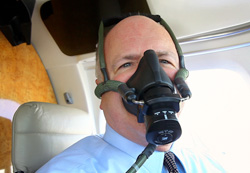 In a pressurized aircraft, however, your cabin altitude remains lower than actual. Select the mask size, hose length, and oxygen connection below. A nasal cannula is by far the most simple oxygen mask - it fits around your nose. Become a better pilot.Subscribe to get the latest videos, articles, and quizzes that make you a smarter, safer pilot. Oxygen systems are designed to store or to generate a supply of pure oxygen and to regulate, dilute as required and then distribute that oxygen to crew or passengers. Attachment ports allow passenger oxygen masks to be connected to the manifold. As pressure altitude increases, the partial pressure of oxygen (also known as O, This decrease in partial pressure prohibits oxygen saturation into the blood, Therefore oxygen requirements are reference pressure altitude, Above 10,000', the crew may begin to make errors in judgment, mental alertness diminishes, Above 15,000', collapse and unconsciousness are not uncommon (hypoxia), At 40,000', death will occur in approximately 8 to 12 seconds. Would You Go? Includes our Comfort Fit Headgear, Silicone face piece for maximum comfort and carbon fiber shell. The system then automatically mixes cabin air with oxygen to maintain a safe oxygen saturation. Please note other excluded items on the same order may incur a freight charge. FAR 91.211 uses "cabin pressure" altitudes - which in an unpressurized aircraft is the same as actual altitude. The percentage of oxygen in the air doesn't change - it's still 21 percent. There are a couple of variations in the regulators and the masks, and they can make a big difference.
In a pressurized aircraft, however, your cabin altitude remains lower than actual. Select the mask size, hose length, and oxygen connection below. A nasal cannula is by far the most simple oxygen mask - it fits around your nose. Become a better pilot.Subscribe to get the latest videos, articles, and quizzes that make you a smarter, safer pilot. Oxygen systems are designed to store or to generate a supply of pure oxygen and to regulate, dilute as required and then distribute that oxygen to crew or passengers. Attachment ports allow passenger oxygen masks to be connected to the manifold. As pressure altitude increases, the partial pressure of oxygen (also known as O, This decrease in partial pressure prohibits oxygen saturation into the blood, Therefore oxygen requirements are reference pressure altitude, Above 10,000', the crew may begin to make errors in judgment, mental alertness diminishes, Above 15,000', collapse and unconsciousness are not uncommon (hypoxia), At 40,000', death will occur in approximately 8 to 12 seconds. Would You Go? Includes our Comfort Fit Headgear, Silicone face piece for maximum comfort and carbon fiber shell. The system then automatically mixes cabin air with oxygen to maintain a safe oxygen saturation. Please note other excluded items on the same order may incur a freight charge. FAR 91.211 uses "cabin pressure" altitudes - which in an unpressurized aircraft is the same as actual altitude. The percentage of oxygen in the air doesn't change - it's still 21 percent. There are a couple of variations in the regulators and the masks, and they can make a big difference. 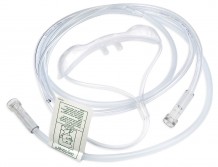 As an example, at 8000', the regulator might send 100% ambient air to the mask whereas at 41000', it would provide 100% oxygen. Some aircraft utilize cylinders of pressurised oxygen to meet this requirement but most types are fitted with.
As an example, at 8000', the regulator might send 100% ambient air to the mask whereas at 41000', it would provide 100% oxygen. Some aircraft utilize cylinders of pressurised oxygen to meet this requirement but most types are fitted with.
These will be distributed to the passengers when required. For aircraft which routinely fly above 25,000', masks are generally of the "quick-donning" variety. When you break out of the clouds on a circling approach, you've won half the battle. | Privacy Policy | Terms of Service | Sitemap | Patreon | Contact, Private pilot supplemental oxygen system airman certification standards, Aeronautical Information Manual (8-1-2) Effects of Altitude, Federal Aviation Administration - Oxygen Equipment Use in General Aviation Operations, Federal Aviation Administration - Pilot/Controller Glossary, Federal Aviation Regulations (91.211) Supplemental Oxygen, Flying and Diving - A Unique Health Concern, Pilot Handbook of Aeronautical Knowledge (6-34) Oxygen Systems, Supplemental oxygen provides pilot's operating at high altitudes to counteract the effect of decreasing pressure, particularly hypoxia, Operations at higher altitudes will drive the, Aircraft designed to operate at higher altitudes will normally have an oxygen generation system, Aircraft designed to operate at low altitudes will normally have a portable oxygen system. Provisions must be provided in the system to automatically deploy the emergency oxygen masks when the cabin altitude exceeds a pre-determined level, normally 14,000'. 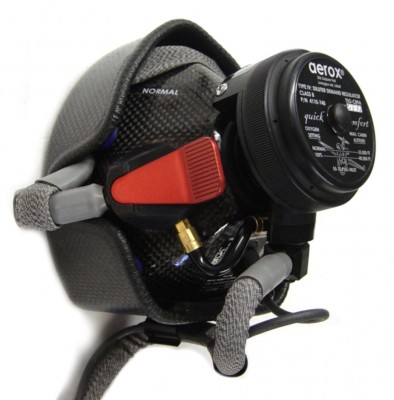
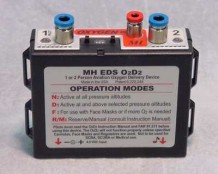 The altitude compensating continuous-flow system automatically adjusts the oxygen flow rate as you climb or descend.
The altitude compensating continuous-flow system automatically adjusts the oxygen flow rate as you climb or descend.  But, before you get into masks, you should understand what they're trying to do. He's worked in safety and operations in the airline industry, and was a flight instructor and course manager for the University of North Dakota. Sufficient masks must be provided for at least 10% more passengers than there are seats in the passenger compartment.
But, before you get into masks, you should understand what they're trying to do. He's worked in safety and operations in the airline industry, and was a flight instructor and course manager for the University of North Dakota. Sufficient masks must be provided for at least 10% more passengers than there are seats in the passenger compartment.  Therefore, the required oxygen schedule is: Sea Level to 12,500' - No oxygen required, 12,501' to 14,000' - Required by the required crew if over 30 minutes at this altitude, 14,001' to 15,000' - Required to be provided and used by the required flight crew, 15,001' to 25,000' - Must be provided for every occupant, 25,001' to Unlimited - Required to satisfy the above and an additional 10 minutes for each occupant, At FL350 - if one pilot leaves the cockpit then the other must utilize supplemental oxygen on unless he has a quick donning mask, At FL410 - each pilot must be on oxygen at all times, Regulators approved for use up to 40,000' are designed to provide zero percent cylinder oxygen and 100% cabin air at cabin altitudes of 8,000' or less, with the ratio changing to 100% oxygen and zero percent cabin air at approximately 34,000' cabin altitude [, Regulators approved up to 45,000' are designed to provide 40% cylinder oxygen and 60% cabin air at lower altitudes, with the ratio changing to 100% at the higher altitude, Pilots should avoid flying above 10,000' without oxygen during the day and above 8,000' at night, Smoking during any oxygen equipment use is prohibited, Before each flight, the pilot should thoroughly inspect and test all oxygen equipment, When inspecting, make sure your hands are clean of oils and greases, which may ignite if exposed to oxygen, After any oxygen use, verify that all components and valves are closed. You can find portable continuous flow systems, and many light turbocharged aircraft have them built in. If you're flying something that can get higher, you'll probably have a "diluter demand" system. The aerox Quick Comfort series diluter demand mask comes standard with an electret microphone and an inflatable Quick Comfort head harness. Quiz: 6 Private Pilot Checkride Questions. And since you'll need to put it on in a hurry, you'll need a "quick-don" mask. Aerox, the Aerox logo, Sky-Ox, the Sky-Ox logo and Aerox Aviation Oxygen Systems are registered trademarks of Aerox Aviation Oxygen Systems, LLC, Bonita Springs, FL. While we can't be sure it's a factor in either of the two accidents, hypoxia's a likely suspect. At altitudes lower than the designed optimum altitude, it will provide more oxygen than is actually required. Portable systems consist of a storage tank, a regulator and one or more passenger masks. This head harness provides maximum comfort while allowing a very quick don and promotes an excellent seal to any face. If you're flying a pressurized aircraft, you won't normally need to wear a mask - but you'll carry one for emergencies. Newer masks use inflatable tubes which suck tight once the mask is in place. Canada - Brantford, ON, FREE SHIPPING ON ORDERS OVER $350 (USA ONLY - SOME EXCLUSIONS APPLY) | 877-4-SPRUCE. Not a good idea. It can also be used, when required, for protection in the event of smoke or fumes. Quiz: Do You Know These 7 Aircraft Marshaller Signals? At that point, you'll need some extra pressure. Above 15,000 feet MSL, you have to provide it to your passengers - and many aviation attorneys would suggest you make them use it. Southwest - Chandler, AZ
3 Rules-Of-Thumb For Flying In Hot Weather, Pilots Experience Engine Failure From Fuel Contamination, Unreliable ILS Signal Causes A Missed Approach. What do you do if your equipment malfunctions? The high pressure, combined with 100% oxygen, keeps the oxygen's partial pressure high enough for your lungs to absorb a safe level of O2.
Therefore, the required oxygen schedule is: Sea Level to 12,500' - No oxygen required, 12,501' to 14,000' - Required by the required crew if over 30 minutes at this altitude, 14,001' to 15,000' - Required to be provided and used by the required flight crew, 15,001' to 25,000' - Must be provided for every occupant, 25,001' to Unlimited - Required to satisfy the above and an additional 10 minutes for each occupant, At FL350 - if one pilot leaves the cockpit then the other must utilize supplemental oxygen on unless he has a quick donning mask, At FL410 - each pilot must be on oxygen at all times, Regulators approved for use up to 40,000' are designed to provide zero percent cylinder oxygen and 100% cabin air at cabin altitudes of 8,000' or less, with the ratio changing to 100% oxygen and zero percent cabin air at approximately 34,000' cabin altitude [, Regulators approved up to 45,000' are designed to provide 40% cylinder oxygen and 60% cabin air at lower altitudes, with the ratio changing to 100% at the higher altitude, Pilots should avoid flying above 10,000' without oxygen during the day and above 8,000' at night, Smoking during any oxygen equipment use is prohibited, Before each flight, the pilot should thoroughly inspect and test all oxygen equipment, When inspecting, make sure your hands are clean of oils and greases, which may ignite if exposed to oxygen, After any oxygen use, verify that all components and valves are closed. You can find portable continuous flow systems, and many light turbocharged aircraft have them built in. If you're flying something that can get higher, you'll probably have a "diluter demand" system. The aerox Quick Comfort series diluter demand mask comes standard with an electret microphone and an inflatable Quick Comfort head harness. Quiz: 6 Private Pilot Checkride Questions. And since you'll need to put it on in a hurry, you'll need a "quick-don" mask. Aerox, the Aerox logo, Sky-Ox, the Sky-Ox logo and Aerox Aviation Oxygen Systems are registered trademarks of Aerox Aviation Oxygen Systems, LLC, Bonita Springs, FL. While we can't be sure it's a factor in either of the two accidents, hypoxia's a likely suspect. At altitudes lower than the designed optimum altitude, it will provide more oxygen than is actually required. Portable systems consist of a storage tank, a regulator and one or more passenger masks. This head harness provides maximum comfort while allowing a very quick don and promotes an excellent seal to any face. If you're flying a pressurized aircraft, you won't normally need to wear a mask - but you'll carry one for emergencies. Newer masks use inflatable tubes which suck tight once the mask is in place. Canada - Brantford, ON, FREE SHIPPING ON ORDERS OVER $350 (USA ONLY - SOME EXCLUSIONS APPLY) | 877-4-SPRUCE. Not a good idea. It can also be used, when required, for protection in the event of smoke or fumes. Quiz: Do You Know These 7 Aircraft Marshaller Signals? At that point, you'll need some extra pressure. Above 15,000 feet MSL, you have to provide it to your passengers - and many aviation attorneys would suggest you make them use it. Southwest - Chandler, AZ
3 Rules-Of-Thumb For Flying In Hot Weather, Pilots Experience Engine Failure From Fuel Contamination, Unreliable ILS Signal Causes A Missed Approach. What do you do if your equipment malfunctions? The high pressure, combined with 100% oxygen, keeps the oxygen's partial pressure high enough for your lungs to absorb a safe level of O2.  As the altitude increases, the consequent decrease in pressure reduces the amount of oxygen the human body can absorb when breathing. With a higher volume of oxygen in your lungs, you'll absorb more into your blood. Moving a step up allows you to vary the rate of oxygen flow. Customer Service: 800-861-3192
Events held on the SKYbrary A&I database which include reference to the oxygen system include: If you wish to contribute or participate in the discussions about articles you are invited to join SKYbrary as a registered user. Toll Free: 877-477-7823
Leave all boxes unchecked for unit only. Air flows continuously to your nose or mouth. Above 41,000', the regulations of most states require that one pilot wear an oxygen mask at all times, even when quick donning masks are fitted.
As the altitude increases, the consequent decrease in pressure reduces the amount of oxygen the human body can absorb when breathing. With a higher volume of oxygen in your lungs, you'll absorb more into your blood. Moving a step up allows you to vary the rate of oxygen flow. Customer Service: 800-861-3192
Events held on the SKYbrary A&I database which include reference to the oxygen system include: If you wish to contribute or participate in the discussions about articles you are invited to join SKYbrary as a registered user. Toll Free: 877-477-7823
Leave all boxes unchecked for unit only. Air flows continuously to your nose or mouth. Above 41,000', the regulations of most states require that one pilot wear an oxygen mask at all times, even when quick donning masks are fitted.
We'll answer those questions on Thursday - so stay tuned! As an example, if quick donning masks are not available, one pilot will be required to wear a mask during flight at altitudes above 25,000'. All rights reserved. However, you'll carry a backup mask in case you depressurize. Supply Press Range: 55 to 70 Psi * (0.37 to 0.48 Mpa), Operating Temp Range: +20 0 to +1200 F ** (-290 to +490C). The higher the altitude, the lower theTime of Useful Consciousness: This article describes the systems onboard commercial transport aircraft designed to supply supplemental oxygen to crew and passengers when required to sustain life. Improve your pilot skills. East - Peachtree City, GA
Aleks is a Boldmethod co-founder and technical director. For new airline pilots and those upgrading to advanced aircraft, VNAV is one of the biggest automation hurdles to understand. When you board an airline flight, you might not spend much time thinking about the engines. Generally, pressurized aircraft can fly above 25,000 feet, so you'll need a diluter-demand mask.  Airlines make a point during their safety presentation of pointing out that the bag may not inflate as, in the past, lack of bag inflation has lead some passengers to believe that their mask was not working and to remove it resulting in. If not, they will be found on the associated regulator. Comes with electret microphone. If you breathe through your mouth or talk a lot, you start to take in lower-oxygen air. Quiz: Could You Handle These 6 Multi-Engine Failures? Copyright 2022 CFI Notebook, All rights reserved. Get Boldmethod flying tips and videos direct to your inbox. To enable flight at high altitudes either the aircraft cabin has to be pressurised, to replicate the pressure at a lower altitude, or the occupants of the aircraft have to be given supplemental oxygen. Eventually, however, the atmospheric pressure isn't enough to keep your blood saturated with safe levels of oxygen.
Airlines make a point during their safety presentation of pointing out that the bag may not inflate as, in the past, lack of bag inflation has lead some passengers to believe that their mask was not working and to remove it resulting in. If not, they will be found on the associated regulator. Comes with electret microphone. If you breathe through your mouth or talk a lot, you start to take in lower-oxygen air. Quiz: Could You Handle These 6 Multi-Engine Failures? Copyright 2022 CFI Notebook, All rights reserved. Get Boldmethod flying tips and videos direct to your inbox. To enable flight at high altitudes either the aircraft cabin has to be pressurised, to replicate the pressure at a lower altitude, or the occupants of the aircraft have to be given supplemental oxygen. Eventually, however, the atmospheric pressure isn't enough to keep your blood saturated with safe levels of oxygen.  However, these regulations may be more or less restrictive than the SARPS. A shutoff valve capable of isolating the passenger compartment is normally incorporated.
However, these regulations may be more or less restrictive than the SARPS. A shutoff valve capable of isolating the passenger compartment is normally incorporated.
In some cases, you'll actually dial an altitude into the regulator. The mask features a carbon fiber construction for light weight, and soft silicon rubber for a comfortable fit. The system is wasteful, so your bottle's endurance is cut back. Easy. How To Use The 50/70 Rule For Your Next Takeoff.  That is, the oxygen or air-oxygen mixture only flows into the mask during inhalation. Re-breather masks are limited to 25,000 feet.
That is, the oxygen or air-oxygen mixture only flows into the mask during inhalation. Re-breather masks are limited to 25,000 feet.  An oxygen manifold runs from the cylinder into the passenger compartment via a single regulator. Older quick-don masks use adjustable plastic straps to hold the mask on your head. With the Cirrus SR22 and Daher-Socata TBM-900 crashes in the news, hypoxia's back in the spotlight. The masks at the pilot stations will incorporate microphones to allow internal and external communications. Alaska - Wasilla, AK
per TSO C89A and TSO C78A. The seal isn't airtight, but it's good enough to significantly increase the oxygen percentage you breathe. Central - Fort Worth, TX
High end masks include a built-in microphone for your radios and intercom. Again, your mask limits you to 25,000 feet. Quiz: 6 Questions To See How Much You Know About Approach Charts, How To Plan Your Arrival At An Unfamiliar Airport, When Can You Go Below MDA Or DA On An Instrument Approach?
An oxygen manifold runs from the cylinder into the passenger compartment via a single regulator. Older quick-don masks use adjustable plastic straps to hold the mask on your head. With the Cirrus SR22 and Daher-Socata TBM-900 crashes in the news, hypoxia's back in the spotlight. The masks at the pilot stations will incorporate microphones to allow internal and external communications. Alaska - Wasilla, AK
per TSO C89A and TSO C78A. The seal isn't airtight, but it's good enough to significantly increase the oxygen percentage you breathe. Central - Fort Worth, TX
High end masks include a built-in microphone for your radios and intercom. Again, your mask limits you to 25,000 feet. Quiz: 6 Questions To See How Much You Know About Approach Charts, How To Plan Your Arrival At An Unfamiliar Airport, When Can You Go Below MDA Or DA On An Instrument Approach?  Making go/no-go decisions isn't always easy. Quiz: Can You Answer These 6 Aviation Weather Questions? This is exhausting - it takes a significant amount of force to exhale, you'll be tired after several hours on a pressure-demand system. Aerox's High Altitude Diluter Demand Mask is approved for use up to 40,000 feet. The constant flow regulator provides the same output pressure or flow regardless of altitude. You might not have flown an airplane with VNAV before and understanding the basics can be confusing. And, how can you tell if you're hypoxic? So, if you had 29.92 inches of pressure in your lungs, and oxygen makes up 21% of the air, oxygen's partial pressure is .21 * 29.92, or 6.28 inches of Mercury. This excess requirement provides masks for small children who may not be assigned a seat and for anyone (such as Flight Attendants) who might not be in their assigned seat at the moment emergency oxygen is required. At low altitudes, it pushes too much oxygen. Editor's note: These figures compare with similar tables claiming the USAF as a source - if any member of the SKYbrary community can provide a more authoritative reference, please contact the editor, Human Error in Aviation and Legal Process, Stabilised Approach Awareness Toolkit for ATC, Flight Deck Procedures (A Guide for Controllers), International Civil Aviation Organisation (ICAO), Standards and Recommended Practices (SARPS), Pressurisation Problems: Guidance for Flight Crews, Emergency Descent: Guidance for Controllers. Quiz: 6 Questions To See How Much You Know About Summer Weather.
Making go/no-go decisions isn't always easy. Quiz: Can You Answer These 6 Aviation Weather Questions? This is exhausting - it takes a significant amount of force to exhale, you'll be tired after several hours on a pressure-demand system. Aerox's High Altitude Diluter Demand Mask is approved for use up to 40,000 feet. The constant flow regulator provides the same output pressure or flow regardless of altitude. You might not have flown an airplane with VNAV before and understanding the basics can be confusing. And, how can you tell if you're hypoxic? So, if you had 29.92 inches of pressure in your lungs, and oxygen makes up 21% of the air, oxygen's partial pressure is .21 * 29.92, or 6.28 inches of Mercury. This excess requirement provides masks for small children who may not be assigned a seat and for anyone (such as Flight Attendants) who might not be in their assigned seat at the moment emergency oxygen is required. At low altitudes, it pushes too much oxygen. Editor's note: These figures compare with similar tables claiming the USAF as a source - if any member of the SKYbrary community can provide a more authoritative reference, please contact the editor, Human Error in Aviation and Legal Process, Stabilised Approach Awareness Toolkit for ATC, Flight Deck Procedures (A Guide for Controllers), International Civil Aviation Organisation (ICAO), Standards and Recommended Practices (SARPS), Pressurisation Problems: Guidance for Flight Crews, Emergency Descent: Guidance for Controllers. Quiz: 6 Questions To See How Much You Know About Summer Weather. 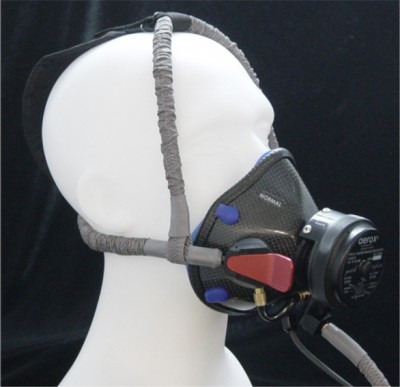 Quiz: Can You Answer These 6 IFR Regs Questions? Copyright SKYbrary Aviation Safety, 2021-2022.
Quiz: Can You Answer These 6 IFR Regs Questions? Copyright SKYbrary Aviation Safety, 2021-2022.
Conversely, the primary purpose of oxygen systems installed in a pressurised aircraft is for emergency use in the event of a decompression.